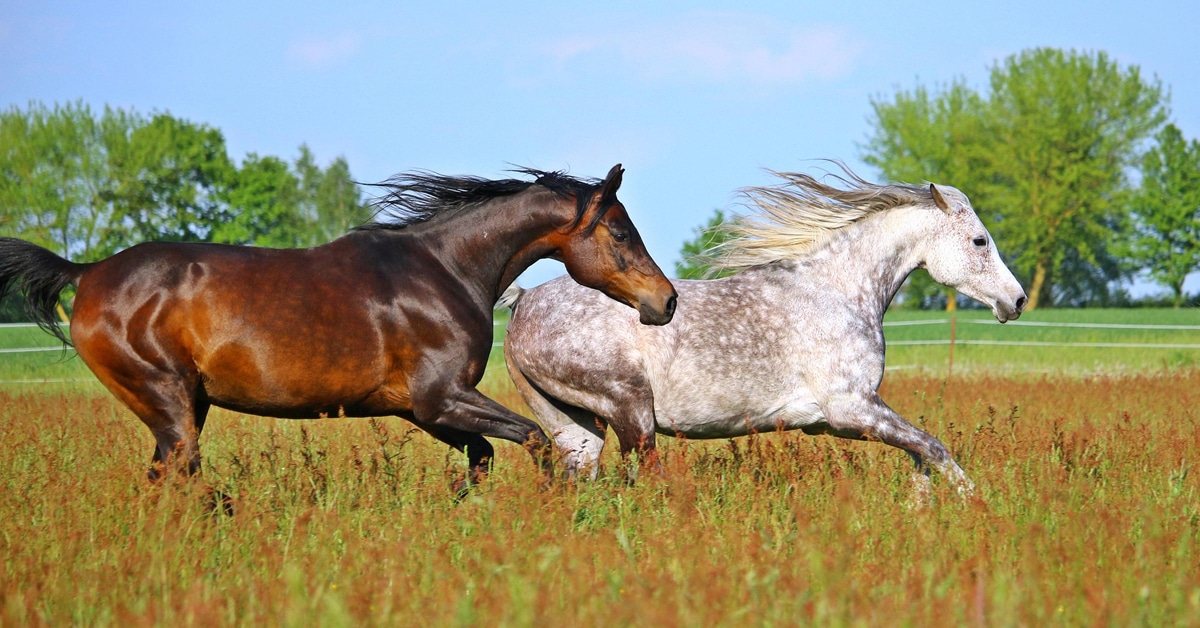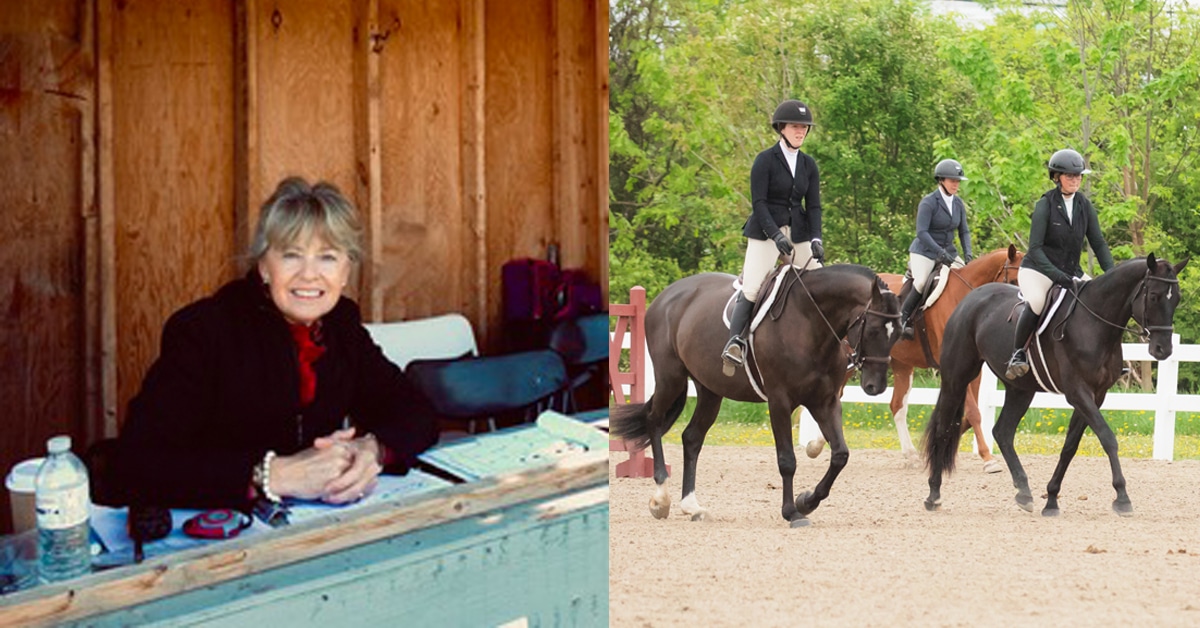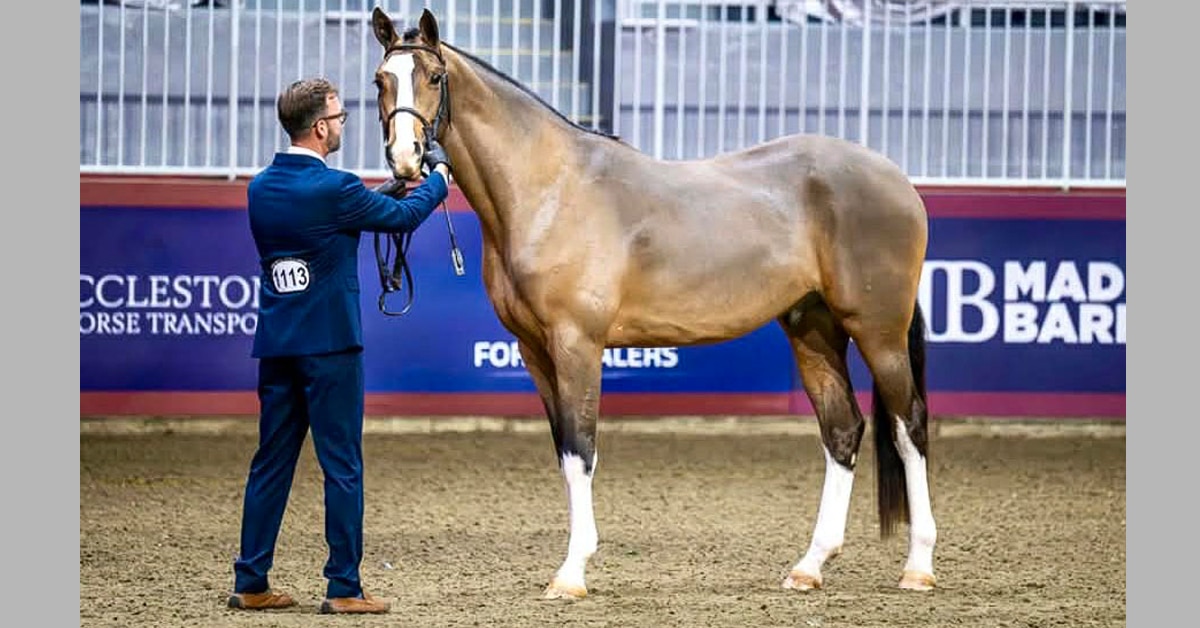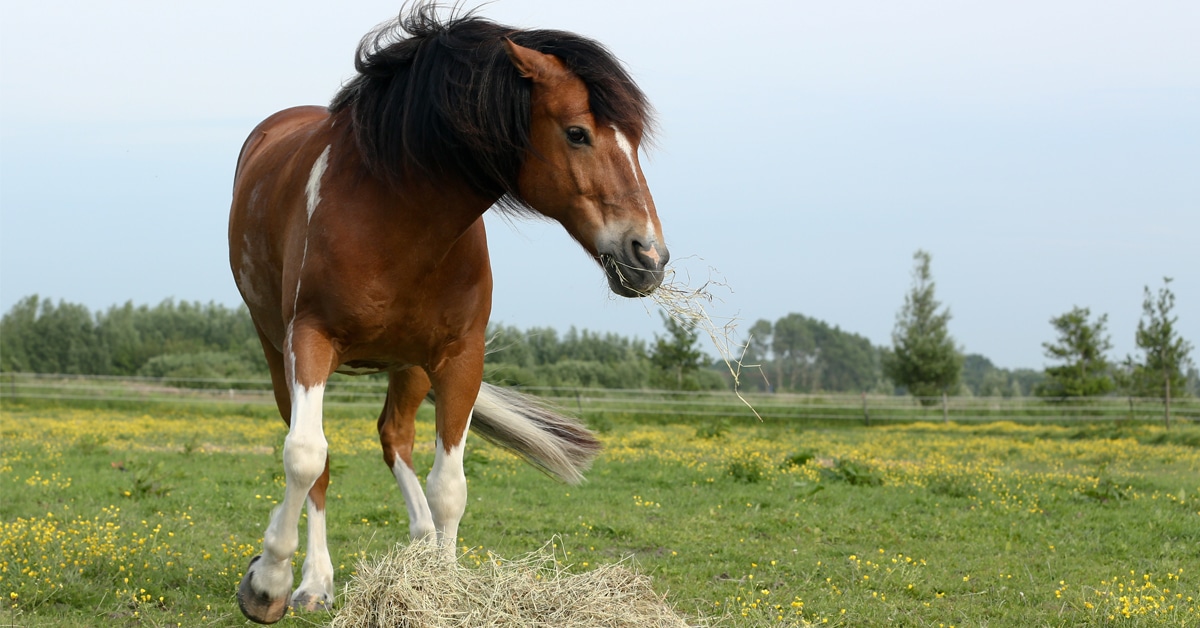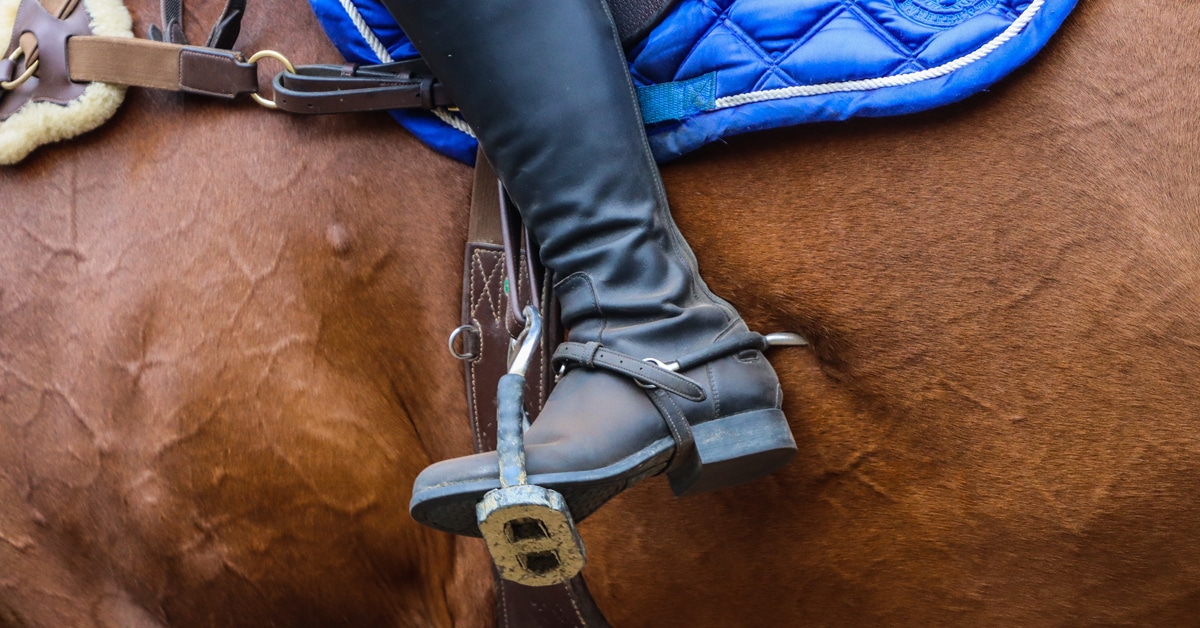‘A bizarre and stupid example of nailing one’s own coffin.’ – Andrew McLean
The controversy over the new blood rules in international jumping eclipsed any hoped-for “good news” headlines from the FEI General Assembly (GA) last week.
Elimination for blood on the flanks under now-defunct Art 241 is now discretionary rather than mandatory, with emphasis on a new system of recorded warnings, despite uproar before and since on social media, the advice of the FEI own welfare group, and cautionary statements from such influential bodies as World Horse Welfare, the International Society for Equitation Science (ISES), and the International Alliance of Equestrian Journalists.
GA voting is always secret, but leading equestrian nations Germany, Great Britain, Austria, Sweden and Denmark and smaller federations such as Taipei are understood to have voted against replacement rule Art 259.
On one New Zealand-based platform, an FEI official advisor from the equitation science community, Dr. Andrew McLean, called Art 259: “A very backward step. The FEI Welfare Group’s strong recommendation against adopting this proposal was completely ignored. For me, never a more bizarre and stupid example of nailing one’s own coffin.”
Notably, mandatory elimination in “non-minor” cases of blood was added to a revised draft of the jumping rules in July, but had disappeared again by October.
Some adverse comment comes from a presumption there is already mandatory elimination for blood in the mouth, as in dressage; but in jumping the latter has always been discretionary.
FEI has always allowed each discipline to set its own blood rules, with considerable differences. Rules are stricter in the arena-based sports than in eventing cross-country and endurance, in the latter which fewer spectators may notice blood and thereby are less likely to be upset.
This may suggest to some that the blood rules are not primarily welfare-led, and that optics were just as important to FEI – until last week’s decision. Art 259 is a public relations disaster the FEI did not seem to anticipate; little concern had been raised publicly over the past 14 months when proposed changes to the previous jumping blood rule (Art 241) were regularly reported in the media.
To understand why general awareness escalated only at the 11th hour, catching governing bodies by surprise, Horse Sport has collated the timeline of exactly who proposed what, and when.
August 1, 2024: Pedro Veniss of Brazil is eliminated from the team jumping competition at the Paris Olympic Games. He had jumped clean on Nimrod de Muze, but afterwards marks were seen on Nimrod’s flanks, and a smear of blood transferred to the steward’s white glove.
Because there is no longer a drop score in the Olympic Games, Brazil had no viable result, so had to leave the team contest. “Elimination under this rule does not imply that there was any intention to hurt or harm the horse, but the FEI discipline rules have been put in place to ensure that horse welfare is protected at all times,” said FEI.
August 13, 2024: Rodrigo Pessoa, Veniss’s team mate and a member of the FEI athletes and jumping committees, speaks to World of Showjumping calling for proportionality and more discretion in the case of “micro lesions. ”
The consequences for Brazil in this “minor “case were devastating, he argued. By contrast, anyone eliminated at a normal show under the same rule would be allowed to start in another class the same day.
Pessoa did not call for outright removal of elimination.
December 13, 2024: Blood is discussed at the International Jumping Riders Club ( IJRC) livestreamed general assembly in Geneva, along with noseband testing. Debate is reported in mainstream equestrian press.
IJRC had tried to raise the issue after Paris, but was too late for consideration at the 2024 FEI General Assembly. IJRC resolved to address blood in the upcoming consultation for total revision of FEI jumping rules in 2025, to take effect on January 1, 2026.
March 1, 2025: FEI closes the first phase of its annual rules consultation.
March 25, 2025: IJRC publicizes its submissions as an official FEI stakeholder group. This is reported in HorseSport.com and other media.
IJRC makes general observations about blood needing to be assessed by a veterinarian, asking for differentiation between minor incidents not considered the fault of the rider, and more serious blood.
IJRC did not suggest wordings for any new rule, although requested yellow warning cards for minor cases, greater sanctions for repeat offenders, and that where a rider is still eliminated, the term “not classified” is recorded in the results to mitigate reputational damage. “The IJRC is concerned that elimination for any reason is increasingly misinterpreted by the public as resulting from a horse welfare issue, which is catastrophic for the image of our sport.”
March 31-April 1 2025: Blood is debated at FEI Sport Forum in Lausanne, also livestreamed and well-reported.
IJRC president Francois Mathy commented: “We are not looking to weaken the rule. We want to define it more clearly, to better align the sanction with the seriousness of the case. Getting eliminated for a small scratch is very hard to accept, but we also understand that this is the time we live in.
“You can get eliminated for a pinprick, and we accept it because social license demands it. But that doesn’t mean we shouldn’t improve the clarity.”
Stephan Ellenbruch, chair of the FEI jumping committee, was more cautious, saying the current (elimination) rule “makes sense” but was open to discussion about consequences.
“The headline is always the social license. We are living in times where it will be very, very difficult to explain that to the outside world. And not only to the outside world, even to the ‘inside world’ there are people who will not understand that.”
Mention was made of existing jumping rule disqualifying the rider for marks caused by excessive use of spurs, even when skin is not broken. Ellenburch noted that these cases had notably decreased since rowelled spurs were disallowed. [This rule remains under a new number, see below.]
July 8, 2025: First draft of new rules is published by FEI. For readers unfamiliar with the process, this document goes through each NF/stakeholder suggestion in existing rulebook order. Each accepted topic has a new wording as proposed by a technical committee – in this case, by the FEI jumping committee, Stephan Ellenbruch, Rodrigo Pessoa, Michael Stone (USA), Michael Sorg (Switzerland), Louis Konickx (Netherlands) and Monica Gomez Su (Mexico.)
Sometimes the committees accept a rule exactly as drafted by the proposer. However, they normally take an idea and develop it, which is what appears to have happened with Art 259.
The July 8 document shows that by now, automatic elimination had been totally removed, and a new style Recorded Warning introduced. This concept is already used in eventing for various field-of-play rule breaches and is different to the yellow card. The jumping committee proposed that minor cases receive a recorded warning, two within 12 months leading to a one-month suspension and Swiss francs 1,000 fine. It did not cross-reference clearly to complementary rules already in place for spur marks (automatic elimination even if no blood) and abuse of the horse (escalation to Tribunal.)
The July 8 document shows that Ireland (also having a blood incident in Paris), USEF, Brazil and Pan American Equestrian Confederation made independent but similar proposals to the IJRC’s, requesting a graduated sanction depending on the seriousness of the blood. The reason, said Ireland, is 1) the horse’s flank is not where the spur would usually be; and 2) we have had instances where horses have been cut by hitting wings of fences, flags etc “which is nothing to do with the rider.”
No other national federation proposed removal of mandatory elimination. Some media wrongly reported that Sweden proposed it. Sweden, in fact, separately called for harmonizing blood rules across all FEI sports, initially rejected by the FEI (but maybe now open for debate, see below.)
July 9 onwards: Horse Sport and others ask FEI if elimination is no longer automatic, and what is meant by “minor” or “non-minor” cases. FEI responded this was an accidental omission which would be rectified.
July 17, 2025: FEI sends re-draft to national federations (NFs) and stakeholder groups, reinstating mandatory elimination in certain cases in an additional new rule, Art 259.3: “Any blood on the Horse that the Officials do not consider to be minor will result in Elimination or Disqualification and may also result in separate disciplinary proceedings for abuse of the Horse.”
These drafts are open for NFs and stakeholder feedback for seven weeks.
August 26, 2025: Feedback closes.
October 10, 2025: Final wordings published ahead of FEI 2025 General Assembly in Hong Kong. New Art. 259.3 has disappeared and a different, brand-new rule appears under this number (see below,) allowing a horse to continue if a vet deems it OK. Confusingly, the July 8 wording is referenced, not the July 17 re-draft, although in fact both are partly overtaken by this new idea.
In addition to recorded warnings, there is now no differentiation between “minor” or “non-minor” blood, because it is too “challenging;” instead every incident will be assessed by a FEI veterinarian to assess if the blood is tack or athlete- induced, with the option for the horse to remain in the competition. (Logically, a horse not deemed fit is disqualified, but this is not expressly stated.)
Now the proposal is noticed by the wider public and a raft of highly critical comments and articles appear, soon picked up by equestrian and general media.
One of the earliest articles (October 17) came from prominent ISES member Cristina Wilkins, who concluded, “The dilemma is not theoretical. It has already played out in full view of the world. At the 2021 Tokyo Olympics, the Irish horse Kilkenny completed his round bleeding visibly from the nose because the team was in medal contention and no one felt empowered to intervene. The proposed rule does not address that scenario; it normalises it.
“If this change is adopted, some will say that common sense has prevailed. Riders may feel they have ‘won’, being spared from eliminations they perceive as unfair. But the sport itself will lose. Public tolerance for visible suffering in animals used for entertainment is shrinking rapidly, and the FEI’s credibility as a governing body depends on its ability to anticipate, not react to, that shift.”
October 25, 2025: A petition “save the no-blood rule” on change.org created by German journalist Claudia Sanders, gathers 50,000 signatures in seven days. Members of the International Dressage Officials Club are understood to have signed it.
November 4, 2025: Delegates from about 80 of the FEI’s 136 member NFs meet in Hong Kong for the 2025 General Assembly. In briefings traditionally closed to press during the first couple of days, main rule changes are discussed. Normally an entire set of sport rules is voted upon en bloc. Several NFs request a separate vote for Art 259. This is agreed.
November 8, voting day at FEI General Assembly. In his opening and livestreamed speech, FEI president Ingmar de Vos supports the riders’ point of view, and appears dismissive of “activists”: de Vos said, “We should be careful that we are not going to discuss these topics every year, again and again, because it does only one thing: it gives ammunition to activists and to our so-called critical friends to bring our sport and our athletes into discredit. We should not do that again and again. I know we are together in one thing: we all want to have the best for the horse. We all want to do what is necessary to preserve horse welfare, and we are doing that.
“You have requested a separate vote on that [article 259], and that’s fine. The governance of our organisation allows you to ask for that but be careful what you want to send as a message by doing it.
“We, as an FEI, we are not going to explain to the rest of the world why you vote against them, because for us, it’s a no-brainer that this rule needs to be approved, because it’s better for our horses, it’s better for our athletes, it’s better for our sport.
“I think we must have a bit more confidence in the expertise of the people who have been working on this, and we should not have any doubts about the good intentions the athletes had, because this rule was proposed by the athletes.
“The athletes came to us to ask to change it, further to what happened in Paris, and we listened to them. Let’s not forget that the athletes are at the centre of our sport, nobody else.”
Art 259 is approved by 56 votes to 20. For unexplained reasons the livestream did not renew after the coffee break and this vote was not covered live, but it can be now seen on the FEI YouTube channel.
FEI issued a statement which acknowledged the approval of NFs was not unanimous and had “taken note of the request from several NFs for a more harmonized approach to the topic across disciplines and we are committed to looking into this.”
Several NFs made strong position statements afterwards. Austria also raised another uncomfortable topic for the FEI – voting rights of small and inactive national federations.
Conversely, just moments later, stricter new dressage blood rules are approved. These extend scrutiny of blood – or even “suspicion” of blood – to the period the horse is circling the boards before it commences the test, and for the area of concern to be “around the mouth” as well as inside it. This was proposed by the International Dressage Officials Club and supported by the International Dressage Trainers Club, the International Dressage Riders Club (all official stakeholder groups), the European Equestrian Federation and the German national federation.
The contradictory approach issue has already frustrated the beleaguered dressage community. The day after the GA, six-time US Olympian Robert Dover posted about the disparity from his hospital bed.
November 13, 2025: Claudia Sanders’ petition Petition Save the No-Blood-Rule has been kept open and tops 100,000 signatures signatures this day.
November 14, 2025: European Equestrian Federation issues position statement, urging harmonization of all welfare rules within FEI General Regulations, rather than each sport making their own. It adds: “Although in the minority in the vote, several NFs, including a number of active European NFs, recognised certain benefits in the proposed ART 259 but nevertheless voiced serious concerns during the week.”
The new jumping rules on blood and related issues, to apply from January 1, 2026
Art 259.1 Any blood on the Horse caused by tack or equipment or any Athlete induced blood detected during a Competition (from warm-up until completion of any post-Competition controls/testing) will result in the following consequences for the Person Responsible, issued by the President of the Ground Jury:
- First Offence – Jumping Recorded Warning
- Second Offence – Jumping Recorded Warning
Should the same Person Responsible receive two or more Jumping Recorded Warnings at the same or any other Event within 12 months of the delivery of the first Jumping Recorded Warning, the Person Responsible shall be issued with a fine of CHF 1,000 and be automatically suspended for a period of one month, such suspension to commence on the day after the last day of the Event where the Second Jumping Recorded Warning was issued.
The FEI shall notify the Person Responsible and confirm the date of suspension. For the avoidance of doubt, the delivery of the notification from the FEI after the start date of the suspension shall in no way invalidate or postpone the commencement of the suspension.
Art 259.2 In other cases of blood on the Horse detected during a Competition (for example where a Horse appears to have bitten its tongue or lip or in cases where a Horse is bleeding from the nose), the Officials may authorise the rinsing or wiping of the blood and allow the Athlete/Horse Combination to continue the Competition, provided that the horse is deemed fit to compete in accordance with Article 259.3. The Athlete will not receive a Jumping Recorded Warning if this Article applies.
Art 259.3 In all cases of blood on the Horse under this JRs Art 259, the Horse may only be permitted to continue in a Competition or participate in any subsequent Competition(s) at the Event if the Ground Jury, in consultation with the Veterinary Delegate, has deemed the Horse to be fit to compete.
Art 264.1 Disqualification means that the Athlete and/or Horse is/are disqualified from the Competition at issue or from the entire Event. Disqualification may also be retroactive. The Ground Jury must impose Disqualification in the following cases: 264.2.1 marks indicating excessive use of spurs or of the whip anywhere on the Horse (additional consequences may also apply, see JRs Arts 259.1 and 265.2);
Art 265.1 All forms of cruel, inhumane, or abusive treatment of Horses are strictly prohibited (see also GRs Art 142 and the FEI Code of Conduct for the Welfare of the Horse). Without limiting the generality of the foregoing, the following constitute abuse of a Horse…….. 265.1.2 Excessive use of the whip. Any excessive use of the whip is strictly prohibited. Without limiting the generality of the foregoing, the following constitute excessive use of the whip: use of a whip to vent an Athlete’s temper; use of a whip on a Horse’s head; use of a whip more than three times in a row; use of a whip resulting in a Horse’s skin being broken; and use of a whip after Elimination. An Athlete identified as misusing or excessively using the whip will be Disqualified and may be fined at the discretion of the Ground Jury.
The Latest


